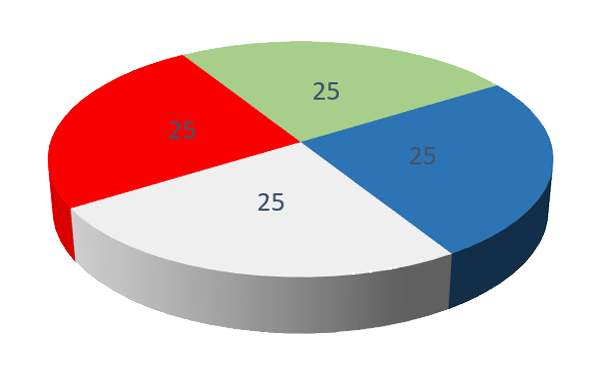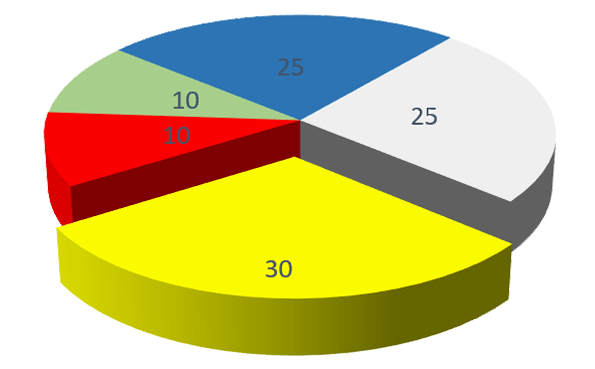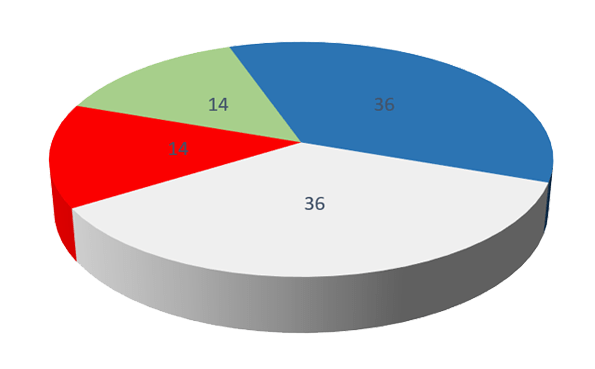The newest GHL LED-lights with integrated control are using the GHL Power Balancing Technology (PBT)
In most dimmable lamps with multiple color channels from other vendors a change in the light color is realized by reduction of the less wanted colors.
This means that the maximum available power can only be accessed when all color channels are operated at 100%. Once a color channel is reduced, the full lighting performance can’t be used.
PBT allows the optimal use of existing power resources: The power that is saved in reduced color channels can be assigned to other color channels. A complex microcontroller-controlled electronics determines temperatures, currents and other parameters, and ensures safe operation and long life of all the LED color channels.
In GHL lights LEDs are generally not operated at the maximum allowed current, through the high power reserves PBT can be used optimally.
The following simple example will illustrate this: light with 100W total output, 4 channels red, green, blue and white, each with 25W
Color variation without PBT: reduction of less wanted channels red and green to 10W
In sum 70W, 30W (shown here in yellow) of 100W unused.
Color variation with PBT: reduction of less wanted channels and increase of the other channels at the same time
In sum 100W, the maximum possible light power can be fully used.
The maximum possible lighting performance is mainly determined by the power supply and temperature management. It therefore makes more sense to move the existing power between the individual channels and thus be able to use the full lighting performance even with color change, instead of just reducing individual channels and not being able to use the possibe total power.
GHL Power Balancing Technology can be found for instance in the Mitras Lightbar 2 and Mitras LX7.



